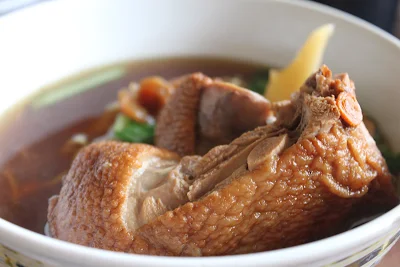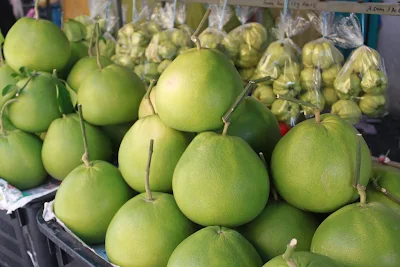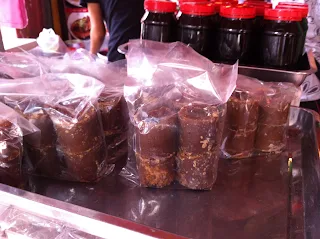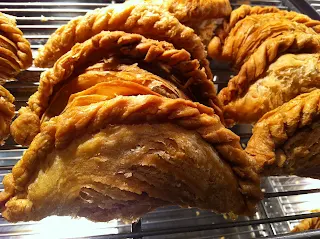I am told that the main reason for dropping by Bidor, a small town in southern Perak in Malaysia, is to obtain the chance to savour the braised duck noodles, pictured above. Bathed in herbal soup, it is a pleasant lunch dish or snack to bite into the well marinated duck breast, accompanied by noodles of your choice and enjoy this classic Cantonese street food. Bidor lies in a unique hub with nearby Kampar and Teluk Intan, in a region with light industrial facilities, palm oil plantations and an ethnic Chinese community with roots of migration after experience of civil conflict both in China and from the local triad wars of a century past. Kampar is the iconic home town of Olivia Lum, a key contributor to NewWater in Singapore and a dynamic business woman in her own right. The region also has a rich historical past - in the 20th century, it saw the Japanese incursions and later was in the centre of the Malayan Communist insurgency, and many hundred years before that, it was flourishing with Hindu and Buddhist socio-political and cultural activities. Below, a snapshot of the seedless guava fruit, of which Bidor is well known for.
The well established Pun Chun restaurant, located at a street corner along the main strip of Bidor ( 38 to 40 Jalan Besar) - picture above - specialises in a few signature dishes, but what I love best is the wu kok (or deep fried yam balls), one of the staples of yum cha sessions. (image below) Here one gets gratifying flavours of the inside fillings - like roast pork bites, peas and meshed yam - after first savouring the crispy outside. Pun Chun also has a branch in the Kota Kemuning section of Shah Alam in Selangor. I have not been back to Bidor since varsity days and so this recent opportunity was especially appreciated. My other fondness is for the unique baked chicken biscuits (kai chai peng in Cantonese).
Another attraction of Bidor is in its variety of baked stuff, pickles, dried condiments and biscuits (above). The pomelos of Perak (below) are steeped in Malaysian Chinese traditions and practices, especially for the Mooncake Festival, and are often snapped up by travellers along the North-South Highway of peninsular Malaysia. I also came upon the petai, a kind of long bean variety, significantly utilised in Malay and Indonesian cooking for their strong flavours to infuse into the dish or just eaten on its own (with a kick to the palate and very much an acquired taste).
I did recall with fondness the unique satisfaction of eating soy sauced stir egg noodles in Bidor. Served with a slightly fatty version of the char siew (Cantonese roast pork) - Sydney outlets tend to use too much lean cuts and lose some of the flavours in this manner - greens and the vinegar soaked green chili cuts (pictures below and above), my expectations were high on arrival at the Pun Chun Restaurant with my brothers and families. Everything was fine that afternoon, except for the egg noodles served - they were shades below in texture, flavour and integrity and did a disservice to the reputation of Pun Chun Restaurant. The egg noodles I had in Johor Baru more than a year ago and recently in Shah Alam were much better.
The elderly man who is in charge of the wu kok sales was friendly and did not mind a chart (above).
Round coloured bean paste cakes below are used for festive wedding occasions (below). Notice the insignia on top of each pink and yellow piece.
Local mangoes (above) are sold in market stalls outside the Pun Chun Restaurant,whilst you are greeted on arrival at the restaurant by hanging pieces of juicy char siew, steamed whole chickens with skin and various condiments of the business. (below)
Would I return? Most probably for the wu kok. The staff I met that day were helpful, especially the matriarch suggesting to me the current two versions of the kai chai peng. Pun Chun was a very busy place, with a long shelf of snacks, tit bits and biscuits all ready packed for sale along one side of the two shopfront outlet.














































